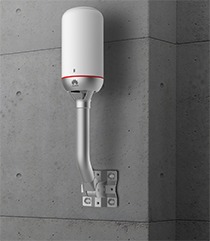Fixed broadband growth in Sub Saharan Africa creates opportunities for telecos and ISPs

Fixed broadband subscriptions in Sub Saharan Africa are estimated to be 6.6 million. This market can grow by up to three-fold by 2023 according to Ovum, a London based global technology research and advisory firm.
This means increased opportunities for Internet Service Providers (ISPs) to fill the connectivity void and to benefit commercially by driving up data usage and growing revenues on their networks with Fixed-wireless access (also known as fixed-wireless broadband or WTTx).
Fixed wireless access has emerged as one of the most significant growth drivers around the world, as explosive user growth is seen in both developed markets like Japan, Germany and Italy as well as Emerging countries like South Africa, Philippines and Mexico. Many believe that eventually 5G FWA will have a significant impact on fixed broadband just as 2G had on fixed voice more than 20 years ago. Case in point, according to a financial report issued by Telkom in South Africa, its WTTx new subscriber base increased by 340 thousand in the fiscal year 2018, beating 35 thousand new fiber users.
The Ovum report, titled Fixed-Wireless Access Drives Broadband Development in Sub-Saharan Africa, finds that Sub-Saharan Africa's legacy of poor fixed-network coverage represents a significantly large and untapped market for broadband service providers. However, strong demand for broadband connection in SSA is not being adequately addressed by wireline technologies such as XDSL and fiber.
In addition to providing internet connectivity for remote and rural populations, FWA can do much to support the growth of digital media, provide the wider population with access to government services and meet the demands of businesses for high-quality broadband services.
Julian Bright, a senior analyst at OVUM and the author of the report says Sub-Saharan Africa's legacy of poor fixed-network coverage represents a significantly large and untapped market for broadband service providers.
“Coupled with the speed of growth and the clear appetite for new digital-media and internet-based services among consumers, among businesses and the public sector, this calls for broadband solutions that are cost-effective and can be quickly deployed. Where the economics are favorable, FWA provides an effective complement to or even substitute for, fixed wireline connectivity. Further opportunities for FWA will continue to open up as operators and service providers in the region realize the benefits of LTE-based FWA.”
FWA advantagesFixed-wireless access can provide a low-cost, shorter time-to-market, practical and high-performance alternative.
Deployment of FWA is less complex and less costly than wireline and subscribers can be brought onto the network more quickly than with fiber, which can lead to a fast return on investment for ISPs.
FWA meets many of the criteria for affordable broadband connectivity, particularly when compared to less economic options such as fiber and copper. It provides ISPs with incentives to invest in covering sparsely populated or remote areas as well as suburban environments, by lowering the cost and shortening the payback period.
According to industry intelligence, more than 40 carriers in SSA have launched FWA service in partnership with suppliers like Huawei, Ericsson and Nokia Siemens. The number of subscribers of FWA service in SSA has reached 3.5 million.
In South Africa, Telkom has been working with Huawei since 2015 and has seen rapid business growth driven by WTTx. Telkom’s latest interim results for the six months ended September 30, 2018 , shows a dramatic increase in mobile broadband subscribers (66.8%), traffic (120%), and Average Revenue Per User (12.8%). Its fixed-wireless access and Wi-Fi continues to perform well, with a 22.1% growth to over 962,000 subscribers. The report attributes the increase to the “Deal of the month”, improved quality and the footprint expansion of its LTE network.
“WTTx gives carriers fast access to home broadband markets, allows them to quickly build up their coverage and enable them to offer triple play services,” says David Chen, Vice President Huawei Southern Africa.
“We are excited by the findings of this report as it gives credence to what we see as a quick win for operators in SSA,” Chen adds.
Price Flexibility is KeyHome broadband networks, whether fiber, DSL, or FWA are subject to the same limiting factors; population density, subscriber take rates, Average Revenue Per User, CPE device cost and availability, network contention or oversubscription rate and labor costs.
The Ovum report emphasizes that key for operators to make FWA services more accessible and affordable for users are, the application of flexible tariff choices and manageable CPE costs. A high-end terminal leads to an increase in user acquisition costs, despite the fact that it increases the FWA capacity and reduces the cost per line. Low-cost, low-end terminals are more suitable to bring down the cost for consumers for the popularity of FWA services.
In addition, an operator offering lower-priced FWA packages with more affordable CPE is also targeting mobile customers who currently use their 4G service to provide a home broadband connection.
Speaking to Huawei’s WTTx offerings, Bright says, “Huawei has built its WTTx fixed wireless access business into a key component of its wireless broadband portfolio. Huawei's FWA strategy also differs from that of its competitors in that it places WTTx as part of its mobile products line rather than part of its fixed broadband offering.”
Huawei’s WTTx solution has been recognized by the International Telecommunications Union as an innovative technical solution that improves global ICT indexes and speeds up the development of broadband connections.